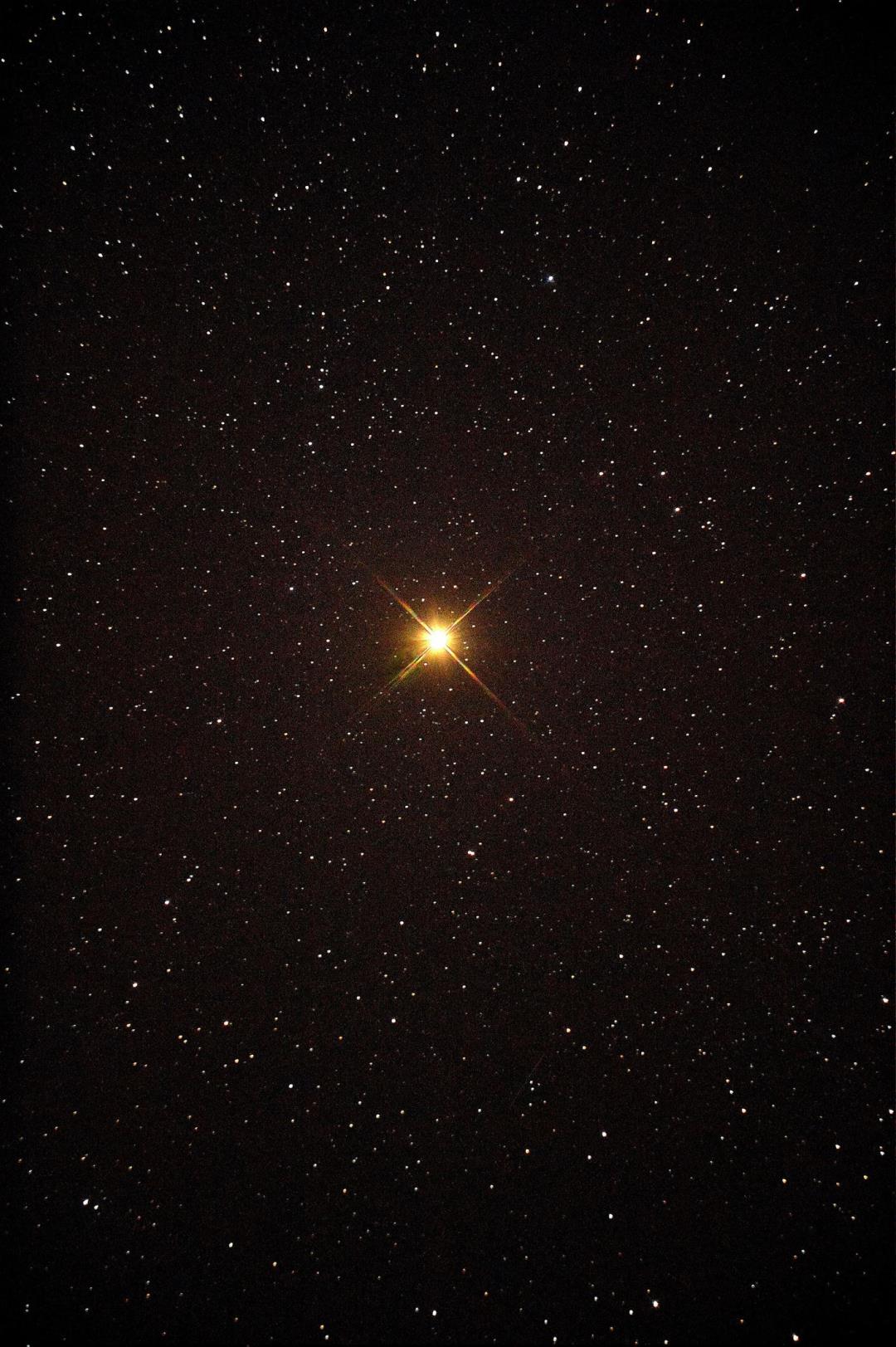(Newser) – Keep your telescope handy: Betelgeuse might be about to blow. Astronomers say the "supergiant" star, which sits 650 light-years away, is at its dimmest in about a century—meaning we could witness our galaxy's first supernova in the telescopic era, Science Alert reports. "It kept getting fainter," an astronomer at Villanova University tells Discover. "Every night, it was fainter than the previous night, and I said, 'Well, it has to stop soon.' And it hasn't." A Villanova paper earlier this month stirred excitement about the star's pending supernova, which would make it 100 times brighter than Venus and cause nighttime shadows on Earth. But it's complicated—because no one's exactly sure what's happening, notes the Washington Post.
Clearly, the star is dying. It is red, after all, so helium atoms are fusing into heavier elements, meaning gravity will eventually cause a powerful inward crush that triggers a supernova. As National Geographic points out, such a star would theoretically eject dust that enshrouds it in darkness before it blows. On the other hand, this might be yet another chapter in Betelgeuse's periodic dimming and brightening, which could have totally different causes. So the supernova might happen tomorrow ... or in 100,000 years. But when it does, the star on Orion's shoulder is going to get really bright—before it fades out. "We've never observed a star and said, 'That star is going to die as a supernova,'" says an astronomer. "That's very much something we still need to learn." (Read more astronomy stories.)
